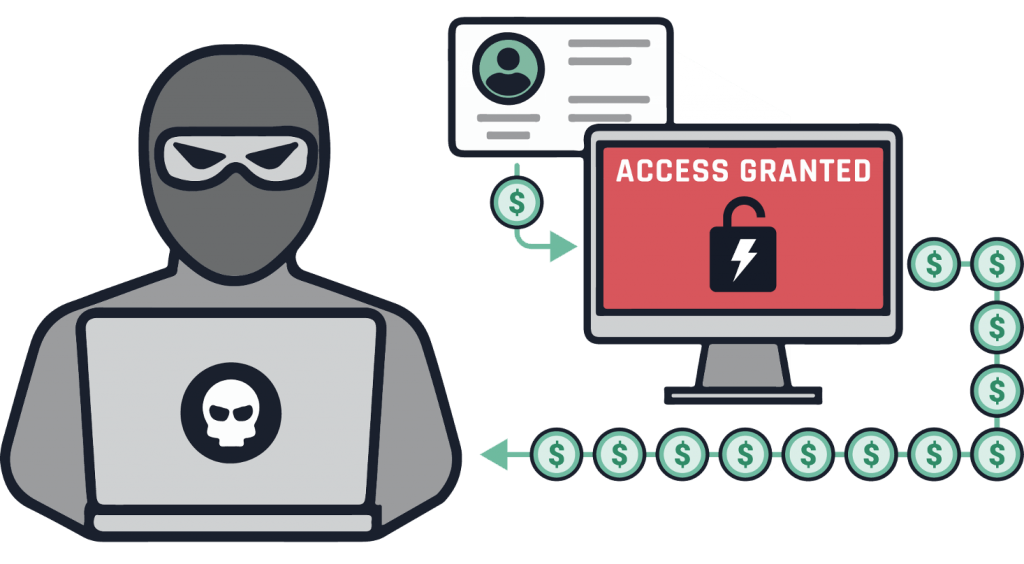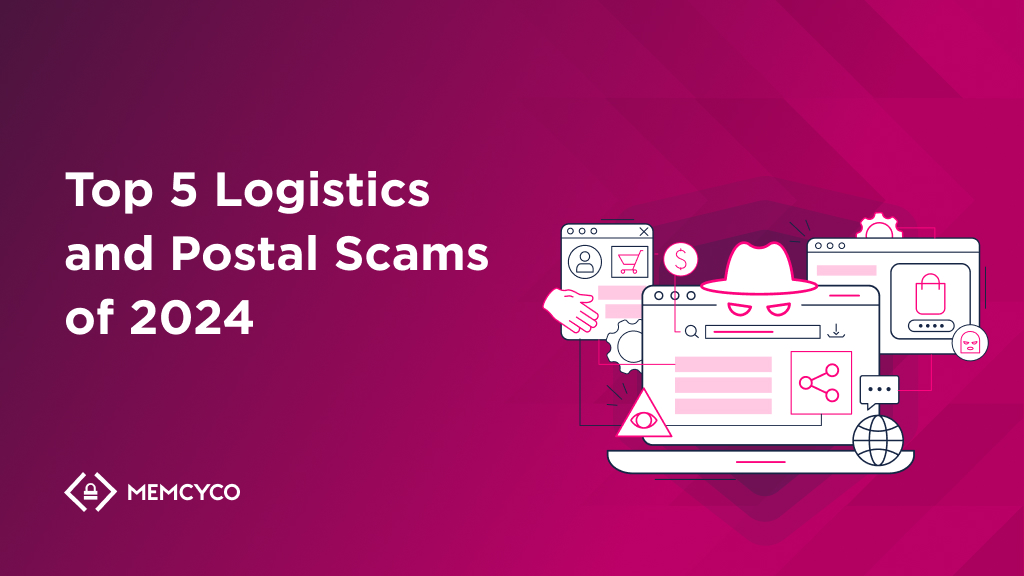Updated for 2025 to reflect the latest scam trends.
From groceries to gadgets, everything can be delivered to your doorstep these days with just a few clicks. In this e-commerce world, logistics and postal companies have become critical players in the retail sector, with brand names that everyone recognizes. But this has also made them goldmines of PII that attackers are aggressively targeting.
In 2024, consumers reported losing over $470 million to text-based scams, with fake delivery alerts leading the pack. In the UK, 42% of adults said they’d received a parcel scam message, making it the most common attack type.
Consumers may know these scams exist, but that hasn’t stopped them from falling for them year after year. So, can logistics and postal scams be stopped? Let’s start by understanding how they work.
Consumers may know these scams exist, but that hasn’t stopped them from falling for them year after year. So, can logistics and postal scams be stopped? Let’s start by understanding how they work.
Last Mile Delivery: What’s the Endgame for Logistics and Postal Scammers?
Logistics and postal scams – also known as parcel delivery scams – target customers of courier companies, shipping services, and government agencies handling deliveries. These scams prey on consumer urgency, trust in familiar brand names, and eagerness to receive packages as quickly as possible.
Scammers impersonate real courier companies using fake websites, spoofed texts, and fraudulent customer service lines.
Their goals? Trick victims into making bogus payments or handing over personal information like social security numbers, credit card details, or email logins. They can then drain bank accounts, hijack online identities in ATO attacks, or install malware to compromise devices further.

Why Are Logistics and Postal Scams Getting Worse in 2025?
Post-COVID, the global shift to online shopping hasn’t slowed down. As e-commerce accelerates, so do delivery scams.
Attackers are doubling down on social engineering techniques-especially smishing (SMS phishing)-and impersonating known brands with spoofed websites and fake support numbers. They deploy these tactics at scale, making it nearly impossible for legacy security tools to keep up.
The other key factor: lack of user awareness. Too many consumers still don’t know how to vet a fake delivery message, which makes even basic scams effective.
Top 5 Logistics and Postal Scams of 2025
All these scams rely on urgency. The faster a customer acts without thinking, the better the scammer’s odds.
1. Phishing and Smishing from Impersonated Logistics Partners
Postal and delivery services are prime targets for scammers seeking personal data.
Royal Mail, a legacy postal service in the UK, has repeatedly been impersonated in phishing and smishing campaigns. Their official site even lists dozens of scam examples.
Example: Scammers send SMS messages asking customers to pay small delivery fees via a link. That link leads to a fake site that looks identical to the real Royal Mail page, a common tactic known as website mirroring and harvests names, addresses, and card details.

During the holiday season, these scams surge. One Reddit user shared an SMS impersonating DHL requesting just 1.65NZD. The dollar amount was minimal, but the data haul wasn’t.
To curb these attacks, companies need to move faster than the scammers-flagging fake delivery notifications and spoofed pages the moment they appear.
2. Account Takeover (ATO) via Fake Websites
ATO happens when a user’s credentials are stolen, usually through a phishing email and fake login page. In more advanced cases, attackers may use reverse proxy phishing to capture and replay login data in real time.
Example: UPS customers reported fraudulent activity on Reddit after scammers hijacked accounts and used the “Bill a 3rd party” feature to ship packages at the victim’s expense. In one case, fraudsters rerouted multiple shipments to Texas-based Amazon warehouses.
Attacks like this often go unnoticed until financial damage is done. The best way to prevent them is to detect spoofed login pages in real time, before credentials ever change hands.

3. Fake Missed Parcel Scam
Another technique used in logistics scams is installing malware onto customer devices that spy on user activity, steal data, and cause damage to data on the device. This scam preys on impatience. Victims get a text saying a parcel was missed, with a link to reschedule. Clicking it installs malware.
Example: Customers of DHL and UPS were sent SMS messages linking to fake reschedule pages that injected malware onto mobile devices. The malware harvested contact lists, card data, and banking credentials.
Malware delivered through fake delivery messages can compromise not just one user, but entire networks, especially when contact lists are exposed.

Simply clicking this link would open a connection to a remote server that installs malicious code on the mobile device, with the aim of stealing information such as contact lists, bank details, card data and more. The bad actor can use this information to steal funds or reach out to the entire contacts list, trying to steal their data, too.
Along with measures like improving delivery notifications and educating customers, logistics companies need to enhance their ability to spot fake websites and anticipate digital impersonation scams before fake sites go live.
4. Fake Customer Support Numbers and Websites
Fake support lines and websites are becoming more convincing – sometimes using toll-free numbers or AI-generated human voices to trick victims.
Example: DHL customers reported being contacted by fraudsters pretending to resolve nonexistent issues. Some were asked to “verify” identity via payment or PII.
Deepfake voice technology has raised the stakes, giving fraudsters even more credibility. The stronger move is giving customers easy ways to verify who they’re speaking to, before trust is abused.
5. Package Rerouting Scam
This B2B scam hits companies that rely on logistics providers. Fraudsters impersonate customers to reroute shipments and steal goods.
Example: A business using UPS lost $6,000 in goods when an order was redirected to a different address by someone claiming to be the customer.
Fraudsters rely on flexible shipping settings to exploit businesses mid-transaction. Locking delivery routes from the outset cuts off one of their simplest plays.
How Memcyco Flags Future Logistics and Postal Scams Pre-emptively and Disrupts them Proactively
While traditional threat intelligence and domain takedown solutions act after are scammed, Memcyco flips the script.
Memcyo’s real-time Digital Risk Protection (DRP) is noted by industry analyst for its truly pre-emptive, predictive, and proactive approach to anticipating and disrupting impersonation scams in real-time
- Pre-emptive scam defense: Memcyco’s Nano Defender is embedded in your genuine website, flagging cloning and spoofing attempts instantly, before fake sites even go live.
- Predictive ATO prevention: Once end users are exposed to scams, Memcyco’s patented technology accurately flags which user accounts are likely to be targeted for ATO.
- Proactive attack disruption: Optional Red Alerts warn victims in real-time the moment they land on an impersonating site, while Memcyco’s decoy credentials replace data imputed on fake forms, rendering stolen credentials and card data useless and locking out attackers that attempt to use it.
By acting earlier in the scam lifecycle, Memcyco helps logistics brands avoid reputational damage, stop revenue loss, and keep customer trust intact. Book a demo to see Memcyco in action.
Hit ‘Contact us’ and book a product tour to discover Memcyco’s award-winning innovations, and how they’re helping scam-targeted enterprises save millions annually on incident-related expenses.
FAQs About Logistics and Postal Scams in 2025
What are courier scams?
Courier scams involve fraudsters impersonating delivery or logistics companies to trick victims into sharing personal information or making fake payments.
How do courier scams work?
Scammers typically send a fake delivery notice via SMS or email, leading to a cloned website or phone line. Once the victim engages, they’re prompted to provide sensitive information or make small payments—giving attackers access to accounts or financial details.
How do courier scams collect sensitive information?
They rely on social engineering tactics. Victims are pressured into entering details like login credentials, credit card numbers, or addresses into convincing fake sites or during fraudulent support calls.
How can I tell if a delivery message is fake?
Look for urgent language, unfamiliar links, misspellings, or unverified sender details. Reputable logistics providers rarely ask for sensitive info via SMS or ask you to pay unexpected fees.
How to report postal scams?
You can report postal scams to your national fraud agency such as Action Fraud in the UK or the FTC in the U.S., as well as directly to the impersonated brand’s fraud team. Memcyco clients can also use detection alerts to flag threats automatically.
How does Memcyco stop fake logistics sites?
Memcyco’s agentless, real-time technology alerts security teams of website spoofing or cloning events, automating takedown if fake sites go live. While fake sites are live, Memcyco replaces user credentials and card data entered into fake site with decoy data, ensuring any stolen credentials are worthless – while locking out attackers that attempt to use the decoy data for account takeover or payment fraud.



















